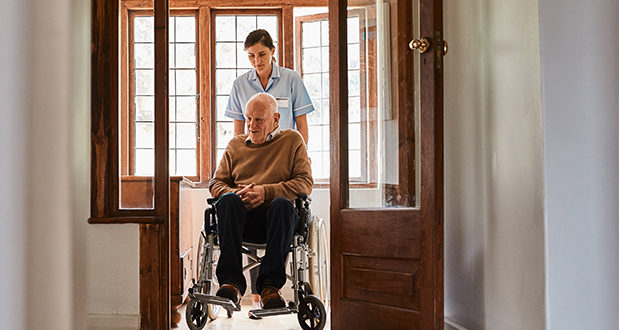With Australia’s unemployment rate at its lowest level for more than 40 years, bringing the prospect of rising wages, higher inflation and climbing interest rates with it, the solution to the workforce shortage problem is staring right at all of us.
I meet with older Australians all the time in my role. As a leading provider of high quality, relationship-based, in-home care in Australia, we employ a broad range of caregivers to engage with our clients, helping them with personal care, light household duties, and transport to appointments and social outings among many other things.
Our workforce ranges in age from 18 to 81 and while most of our caregivers are younger people, 10% of them are aged 65 or above. Our older caregivers are attracted to a role with Home Instead Australia because they are looking for purpose and a way to give back. Increasingly, working with us also provides extra income to top up their retirement earnings.
Many older women, in particular, have not been in a position to contribute as comprehensively to their superannuation savings as their male counterparts, so working for an income is actually a necessity.
Older workers are ideal for our industry, and I would suggest many others. Their level of experience is more than just skills gained through their past careers; they bring life experience and a level of emotional intelligence that only comes with time.
The beauty of gaining this ‘lived experience’ is that it can be shared with our younger caregivers through mentoring. Reverse mentoring also occurs with our younger caregivers developing confidence and leadership skills through helping our older staff build new skills, particularly in the area of technology.
In our experience, this intergenerational environment often results in more effective problem solving and brainstorming. It often leads to increased productivity. Many older Australians also report health benefits from their decision to remain in the workforce – it helps them to remain physically and mentally active, while reducing feelings of loneliness, isolation and diminishing self-worth.
The statistics show us more older Australians want to work for longer. In 2020/21, Australians aged 65 and over had a workforce participation rate of 14.8%, compared with 6.0% in 2000/01. Of these workers, three in five were men and two in five were women. Recent National Seniors research shows 20% of pensioners want to get back into work, an unsurprising fact given the increasing cost of living pressures facing this demographic. So what is stopping them?
One of the main reasons is the pension scheme. The stark reality is Australia’s pension scheme actively discourages pensioners from working. Under the Age Pension income test, a pensioner can earn an average of $480 a fortnight – or $12,840 a year – before their payments are reduced at an effective marginal tax rate of at least 50%.
It's hardly an incentive to look for extra work. And yet, older Australians are willing, very able, and plentiful. In fact, there are around 2.6 million full or part-time pensioners in Australia and only about 3.0% of them are currently working.
Take 65-year-old former registered nurse Lynette who currently works as one of our caregivers and would like to work two to three days a week in this role. Her husband passed away about 18 months ago and she knows she wants to work for another five years.
She describes her desire to give back to her community and is passionate about keeping older people engaged in work, but her passion is unable to be met without onerous financial penalty.
In the aged care sector, about a quarter of all shifts – around 140,000 – are often not filled. And we are not alone. The Australian Chamber of Commerce and Industry says “businesses of every size, in every industry, in every corner of the country, are experiencing the worst skill and labour shortages in more than two decades”.
I see the solution to this problem every day – in the faces of our older caregivers. Let’s make it easier for them to unretire by providing workplaces that welcome their wisdom, support their needs, and reward their contributions.
Georgia Downes is the chief operating officer of Home Instead Australia.
Do you have an idea for a story?Email [email protected]
 Aged Care Insite Australia's number one aged care news source
Aged Care Insite Australia's number one aged care news source


The Liberal lie that unemployment is at it’s lowest rate ever, is just that – a lie.
Roy Morgan has just last week released data that the actual unemployment rate is 9.7% and completely fails to factor in “underemployment” given that the definition of “employment”, is actually only 1 hour per week.
Interesting that the number of full/part-time pensioners is also the same number of people who provide unpaid care to family members and others. My question is how many of one number, is also in the other number…?
This is an option that *could* be offered to older people, who are actively seeking work. It should not be pushed onto anyone. There is a distinct difference there.
Hi Georgia,
I agree with you in that many older nurses would love to work part-time and be involved to support the wider workforce at such a great time of need. One problem is that whilst we talk about the need for child friendly working conditions, we also need to talk about what we need to do to attract and support an older workforce.
Older workers are less likely to want to work shifts that start at 6 am, or work full-time. Older nurses experience and skills could be utilised to support the full-time nurses across the very busy times of the day, support student nurses and health care workers on placement, patient liaison roles , infection control and medication support. We need to think outside of the current workplace box for a flexible and welcoming conditions to attract senior nurses and their rich source of expertise.